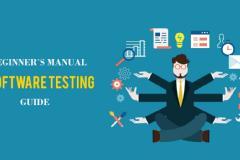Manual Testing With Agile
The "Manual Testing with Agile" course is a comprehensive training program designed to equip participants with the skills and knowledge needed to perform effective manual testing within Agile software development environments. Through a combination of theory, practical exercises, and real-world examples, participants will learn how to seamlessly integrate manual testing practices into Agile methodologies, ensuring the delivery of high-quality software within fast-paced development cycles.
Course Highlights:
-
Duration: 3 weeks / 1.5 to 2 hours of per day (Flexible Timings)
Manual Testing
Course Outline:
Module 1: Introduction to Software Testing
-
Understanding the role of software testing in the development lifecycle
-
Overview of manual testing and its importance
-
Different types of testing (functional, non-functional, etc.)
Module 2: Software Development Life Cycle (SDLC) and Testing
-
Overview of various SDLC models (Waterfall, Agile, etc.)
-
The role of testing in different phases of SDLC
Module 3: Test Planning and Test Strategy
-
Creating a test plan: objectives, scope, and approach
-
Defining a test strategy based on project requirements
-
Identifying risks and mitigation strategies
Module 4: Test Design Techniques
-
Introduction to black-box and white-box testing techniques
-
Equivalence partitioning, boundary value analysis, and decision table testing
-
Test case design based on requirements and specifications
Module 5: Test Execution and Defect Reporting
-
Executing test cases and documenting test results
-
Identifying and reporting defects using defect tracking tools
-
Test data management and environment setup
Module 6: Functional Testing
-
Verifying the functionality of software components
-
Testing different types of functional requirements
-
Techniques for testing user interfaces, input validation, and more
Module 7: Non-Functional Testing
-
Understanding non-functional testing categories (performance, security, etc.)
-
Exploratory testing and usability testing
-
Stress, load, and performance testing basics
Module 8: Regression Testing and Test Maintenance
-
Introduction to regression testing and its importance
-
Creating and maintaining a regression test suite
-
Handling test case updates due to changes
Module 9: Usability and User Acceptance Testing (UAT)
-
Conducting usability testing to evaluate user experience
-
User acceptance testing: verifying software against user requirements
-
Collaboration with stakeholders and end users
Module 10: Test Reporting and Documentation
-
Writing effective test summary reports
-
Creating test documentation: test cases, test scripts, etc.
-
Communicating test results to stakeholders
Module 11: Defect Management and Tracking
-
Understanding defect life cycle and its stages
-
Creating, prioritizing, and assigning defects
-
Monitoring and closing defects
Module 12: Test Closure and Lessons Learned
-
Preparing for test closure: criteria and activities
-
Analyzing testing results and identifying improvements
-
Conducting lessons learned sessions
Module 13: Exploring Test Management Tools
-
Introduction to test management tools (TestRail, Zephyr, etc.)
-
Using test management tools for test case organization and execution
Module 14: Test Automation Overview
-
Introduction to test automation and its benefits
-
Understanding when to use manual testing vs. automation
Module 15: Future Trends in Software Testing
-
Exploring emerging trends in software testing
-
Introduction to AI and machine learning in testing
Contact us For More Details
Contact us For More Details
Agile
Agile Software Development Fundamentals
Course Outline:
Module 1: Introduction to Agile Methodology
-
Understanding the need for Agile in modern software development
-
Overview of Agile principles and values
-
Contrasting Agile with traditional waterfall methodologies
Module 2: Agile Manifesto and Principles
-
Exploring the four values and twelve principles of the Agile Manifesto
-
Applying Agile principles to software development
Module 3: Scrum Framework
-
Introduction to the Scrum framework
-
Roles and responsibilities in Scrum (Scrum Master, Product Owner, Development Team)
-
Scrum events: Sprint, Daily Scrum, Sprint Review, Sprint Retrospective
Module 4: Scrum Artifacts
-
Understanding Scrum artifacts (Product Backlog, Sprint Backlog, Increment)
-
Creating and maintaining a Product Backlog
-
Estimating and prioritizing backlog items
Module 5: Agile Planning and Estimation
-
Agile planning principles and techniques
-
Story points, relative estimation, and planning poker
-
Sprint planning and capacity estimation
Module 6: Agile Development Practices
-
Test-Driven Development (TDD) and Behavior-Driven Development (BDD)
-
Continuous integration, continuous delivery, and continuous deployment
-
Refactoring and maintaining a clean codebase
Module 7: Kanban Methodology
-
Introduction to the Kanban methodology
-
Visualizing work with Kanban boards
-
Implementing pull-based workflow and managing work-in-progress
Module 8: Extreme Programming (XP) Practices
-
Overview of Extreme Programming (XP) practices
-
Pair programming, test automation, and continuous feedback
-
Embracing change and frequent releases
Module 9: Agile Metrics and Monitoring
-
Measuring team and project performance with Agile metrics
-
Tracking progress using burndown charts and velocity
-
Monitoring quality and technical debt
Module 10: Agile Collaboration and Communication
-
Creating a collaborative and cross-functional Agile team
-
Effective communication within Agile teams
-
Facilitating meetings and ceremonies
Module 11: Agile Adoption and Transformation
-
Strategies for adopting Agile in organizations
-
Overcoming challenges in Agile adoption
-
Scaling Agile practices for larger projects and teams
Module 12: Agile and DevOps Integration
-
Integrating Agile principles with DevOps practices
-
Building a culture of collaboration and continuous improvement
Module 13: Agile Leadership and Coaching
-
Roles and responsibilities of Agile leaders and managers
-
Coaching and mentoring Agile teams for success
-
Leading through change in an Agile environment
Module 14: Agile in Different Contexts
-
Applying Agile principles beyond software development (marketing, HR, etc.)
-
Exploring Agile for distributed and remote teams
Module 15: Future Trends in Agile
-
Exploring emerging trends in Agile methodology
-
The evolution of Agile practices and frameworks








